Little House on the Prairie, Walnut Grove, MN
Steven Dutch, Professor Emeritus, Natural and Applied Sciences, University of Wisconsin - Green Bay
Laura Ingalls Wilder (1867-1957) wrote a series of books in the 1930's describing her childhood as a prairie homesteader but it wasn't until her books became the basis of the TV series Little House on the Prairie that she came to be widely known and a historic figure in her own right. This site preserves the faint physical traces of the family's first dugout home.
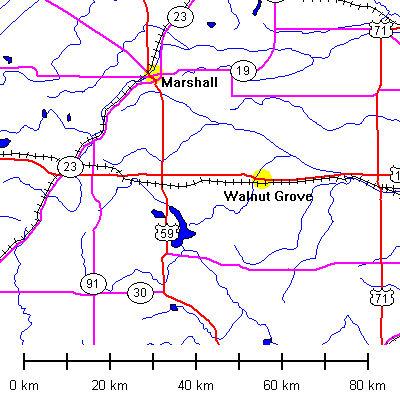
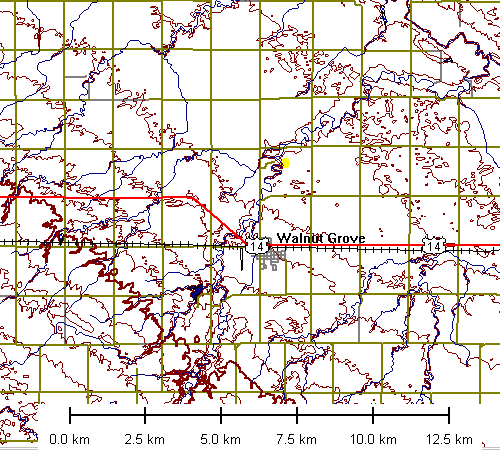
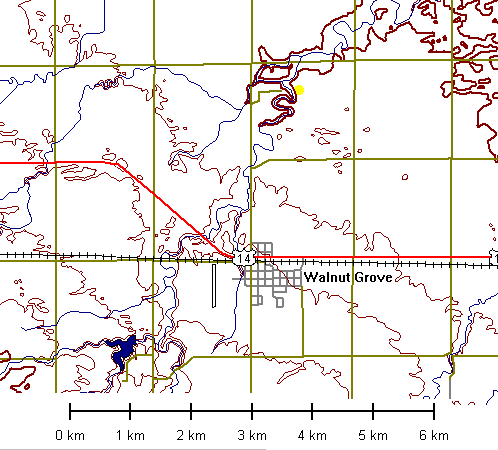
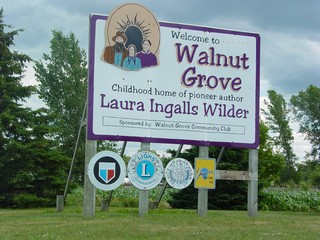 |
US Highway 14 from Wisconsin into South Dakota has been designated the Laura Ingalls Wilder Historic highway. |
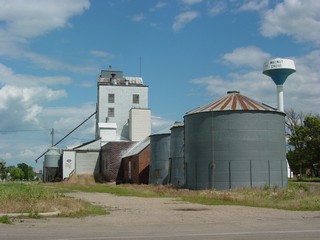 |
|
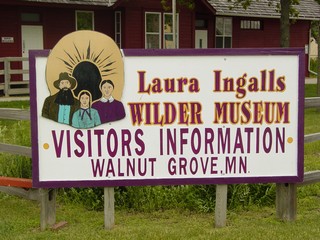 |
Technically, De Smet, South Dakota should be the locale for the television series, since Ingalls lived there during the time covered by the series. However, the producers of the series decided De Smet wasn't euphonious enough for television. However, De Smet also has an abundant supply of attractions for fans of the books and series. |
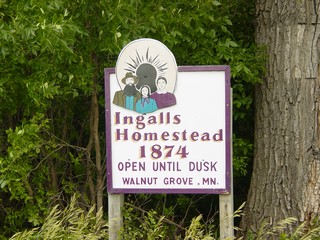 |
The homestead site is on a private farm which maintains it nicely and allows public access. Below are scenes from the vicinity of the site. |
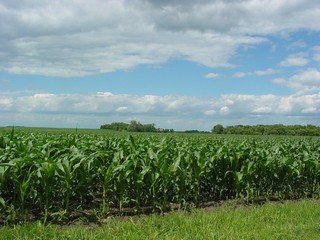 |
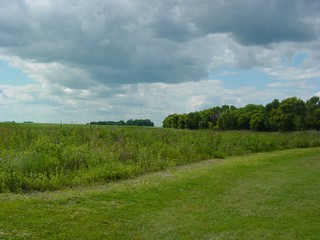 |
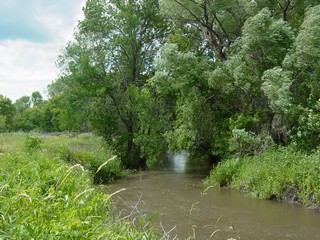 |
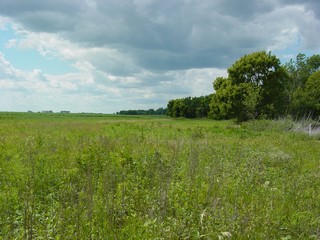 |
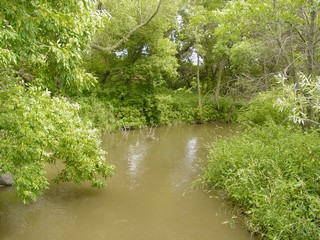 |
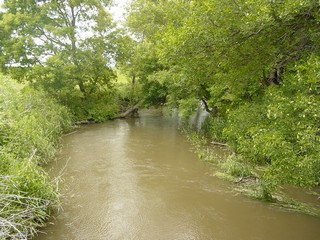 |
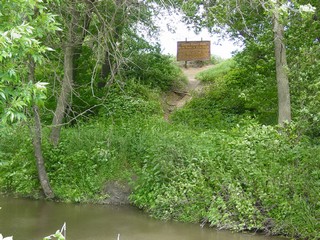 |
Sales of Wilder's books didn't inspire enough interest in her to cause her homesites to be preserved, so there are few original sites remaining. Here, the only physical trace of the homestead dugout is a shallow depression in the bank of the stream. Erosion and human traffic probably act in this case to extend the life of this feature. |
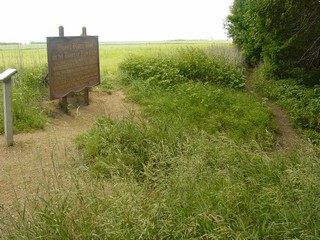 |
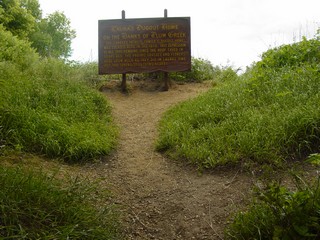 |
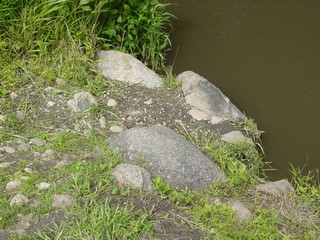 |
There's more here to interest a geologist than one might think. This area was glaciated and large erratics are visible in the Plum Creek. |
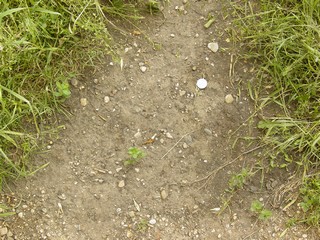 |
The soils are dark tillites of the Des Moines glacial lobe, and owe their dark color to dark Cretaceous shales eroded by the glaciers. |
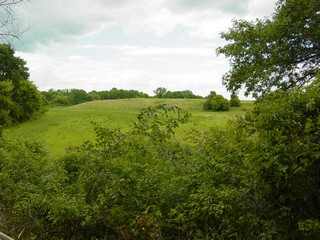 |
On the east side of the stream is a prominent stream terrace. |
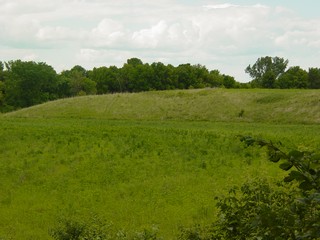 |
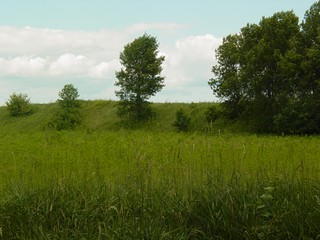 |
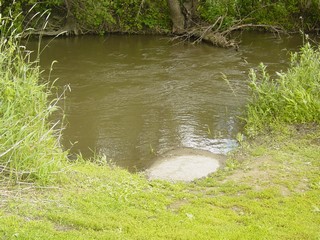 |
Ingalls' book about her time here, On the Banks of Plum Creek, refers to a large rock big enough for her and her sister to run on. The largest rock now visible is this one, which has been buried. A nearby placard describes the rock as being about 3 meters on a side before it was concealed.
It's possible this is the "Big Rock" of the book, or there may have been another large rock now concealed by flood deposits. However, since Ingalls would have been only seven years old when she lived here, and didn't write her books until over half a century later, it's possible she just may not have remembered accurately. |
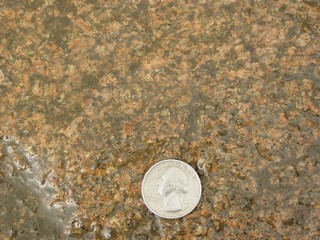 |
The rock is granite, most likely an erratic. However, since the crystalline rocks of the Minnesota River are not that far away or deeply buried, we cannot rule out the possibility of an actual outcrop. |
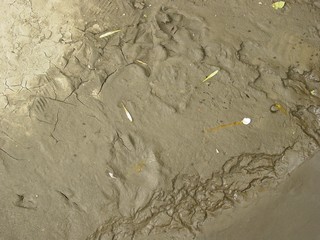 |
This site is a nice object lesson in archeological geology. Even with minimal disturbance, human sites can disappear pretty rapidly. Only the most fastidious care will preserve antiquities. And we can't hope to save everything - we simply don't have the people or the resources.
Return to Historic Sites Index
Return to Virtual FieldTrips Index
Return to Professor Dutch's Home Page
Created 7 April 2003, Last Update 06 June 2020